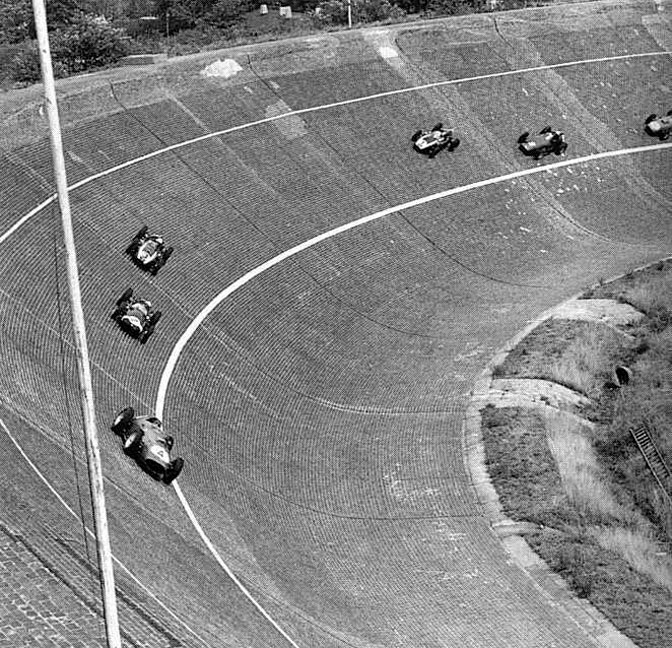The Avus racetrack near Berlin in Germany had a forty-three-degree high-speed banked corner.
The Nordkurve” or “Nordwand.
It was a place to ‘test the limits of your car and your stomach in one lap’.
The Avus Temple of Speed. AKA Avus stands for Automobil-Verkehrs- und Übungsstraße, meaning Automobile Traffic and Practice Road.
The circuit was 12.16 miles long and featured two long straights, a hairpin and a steeply banked corner at the other end: the ‘Nordkurve’.
Originally planned in 1909, it eventually opened in 1927; this was before Nürburgring, meaning all Germany’s significant racing efforts and records were held at Avus.
In 1934, Hans Stuck, driving the mid-engined Auto Union Silver Arrow, set three world land speed records.
F1 drivers of the day were not best pleased to be racing on a brick circuit, especially with a 43-degree banked corner.
As to safety, there wasn’t even a protection barrier around the top; if you lost control or your engine stopped, you were doomed.
The Avus was christened the Wall of Death.
Despite the danger, in 1937, Mercedes and Auto Union were battling; Hermann Lang won the race in his Mercedes W125 Streamliner with an average speed of 162 mph.
The circuit banking was demolished in 1969 as it was considered to be a significant health hazard.
The circuit where cars got butterflies before hitting the ‘Nordkurve’.
![]()

